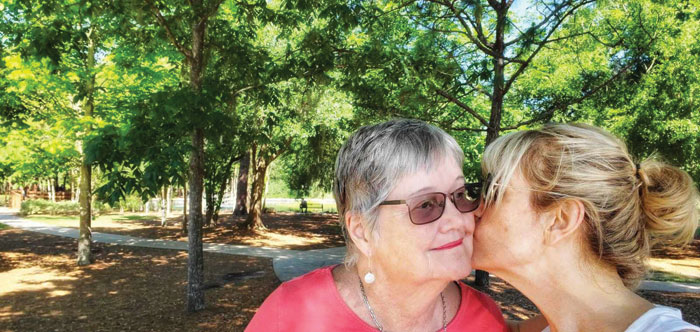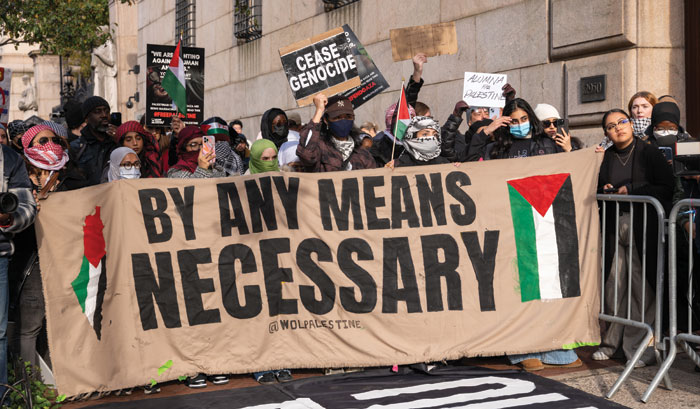In 1992, California voters elected two Jewish women to the U.S. Senate, Dianne Feinstein and Barbara Boxer. Shortly after New Year’s Day 2015, Boxer, 74, announced that she would not run for re-election, and there is some speculation that the now-81-year-old Feinstein may do the same in 2018. With the most immediate attention focused on the race to succeed Boxer, I’d like to look at what Boxer’s career has meant for California politics, as well as for the Jewish role in transforming the state from a contested, Republican-leaning bastion to the overwhelmingly Democratic place it is today.
The year 1992 was a turning point in California for more than the elections of Boxer and Feinstein. Bill Clinton and Al Gore broke the Republican hold on the state’s massive trove of electoral votes. Since Harry Truman’s 1948 upset election, no Democratic presidential candidate had won California except Lyndon Johnson in his 1964 44-state landslide.
After 1992, Democrats won the state every single cycle.
Republicans owned California’s governorship from Jerry Brown’s departure in 1975 until Gray Davis was elected in 1998, only to be recalled in 2003. Bracketing Boxer’s first Senate victory was Republican Pete Wilson’s 1990 election as governor over (guess who?) Feinstein. Then, in 1994, incumbent Wilson rode his attachment to the anti-immigrant Proposition 187, his support for the death penalty and a Republican wave to defeat Kathleen Brown, Jerry Brown’s sister. It was tough to be a liberal Democratic candidate fighting that 1994 weather front.
How Clinton won California in 1992 is as illuminating as the fact that he did. There was no great demographic or philosophical surge pulling Democrats forward. Republicans still basked in the post-Ronald Reagan glow of ideological ascendance, and Democrats feared being forced into a marginalized liberal corner. Clinton famously tugged his party to the center from its stereotype as the home of Northeastern liberalism, still won the party nomination and then put another Southern moderate on the ticket in Gore. The identity shift was phenomenally successful, aided by an economic recession that undercut President George H.W. Bush’s re-election. The Clinton-Gore ticket’s moderation on foreign policy helped reconnect Jewish voters to the Democratic Party after some drift during the post-Vietnam era when Republicans were sometimes perceived to be more strongly pro-Israel.
Clinton’s election marked the high-water mark of Democratic centrism and spawned a generation of moderates who held sway in the Democratic leadership even after their rationale and electoral appeal waned.
In the short term, Feinstein and Boxer came to represent two very different types of Democrats. Feinstein, with higher approval ratings than Boxer, was the centrist, a major Senate player who formed alliances throughout the Senate. Boxer was the liberal fighter, often an outsider from the legislative leadership and deal making, but nonetheless effective in keeping issues alive and occasionally winning dramatic cross-party victories in such areas as open-space preservation, reproductive rights, ethics and oversight of the Pentagon’s spending.
That both senators are Jewish is more than coincidence. In the years before demographics and changing ideological lines allowed a bolder and more populist Democratic Party to be more successful in California, the Jewish linkage to the party did much to keep the party’s prospects alive.
Stretching from the 1960s and into its twilight today, this was the era of the Jewish “bigs” — from the two U.S. senators to Henry Waxman and Howard Berman in Congress, to Zev Yaroslavsky and a host of other Jewish politicians in Los Angeles. With whites casting the great majority of votes in Los Angeles as well as throughout the state, a liberal, highly mobilized Jewish political community did wonders to move things in a more progressive direction. Jews helped build and sustain the historic Tom Bradley coalition in Los Angeles, and the Westside “Jewish” seat, held first by Ed Edelman and then by Yaroslavsky, made the L.A. County Board of Supervisors less of a conservative bastion.
Yet, for many years, being seen as too liberal seemed a potential liability in statewide elections for California Democrats, and Boxer always seemed to be fighting for survival. Republicans recognized the greater challenge in overcoming Feinstein’s center-left appeal. Boxer, the feisty liberal, provided a more tempting target. In each election, however, Republicans started out optimistic, only to fall short. She won in 1998, 2004 and 2010, an astounding record for a senator expected to lose just about every time, running twice in nonpresidential years when Democratic turnout was depressed, including 2010, when the Democrats suffered catastrophic defeats nationally.
Boxer’s career belied the electoral dangers of liberalism for California Democrats. Her feisty stances may have lost her a number of voters in the center, but she maintained a fiercely loyal base of voters and activists who considered her a champion. Just a year before her election to the Senate, while she was serving in the House, she led a delegation of House members to demand that the Senate hold a hearing on Anita Hill’s charges against Supreme Court nominee Clarence Thomas, hitting home with the party’s base.
Even in Boxer’s first term in the Senate, the state’s politics were changing, becoming more diverse and potentially more liberal and Democratic. The ground was shifting under the Clinton-era Democratic consensus.
Within two years of Boxer’s first election, massive demographic and political movements fundamentally changed the electorate to reflect the greater role of communities with large immigrant populations. The 1994 passage of Proposition 187, a measure that denied public services to undocumented residents and was eventually overturned in federal court, generated in reaction a phenomenal rise in Latino citizenship applications as well as voter registration. These political effects soon washed over to Asian-Americans as well.
According to the Field Poll, more than 1 million additional Latinos joined the voter rolls in the decade of the 1990s, and they voted overwhelmingly Democratic. They were organized and bolstered by a Latino-based labor movement far stronger than it had been when Boxer first ran in 1992. Asian-Americans, a Republican-leaning group in 1992, when they gave a majority of their votes to Bob Dole over Clinton, became drawn into the progressive camp by the immigration issue, to the point that they now constitute the fastest-growing Democratic bloc in the state. The Republican Party’s reputation among these groups plummeted, and their party’s share of the electorate entered a slow but apparently inexorable decline.
The Democratic surge and Republican decline following Proposition 187 drove the Democratic Party from a competitive to a dominant coalition. Being liberal earned even more credence in the latter part of the first decade of the 2000s, as the economic collapse discredited conservative economics and pulled the state leftward. The Democratic Party “base” today is far more unified and progressive than it was in 1992. The electability argument against liberal candidates that might have been persuasive in Republican-dominated early 1990s California rings hollow today, with Democratic prospects so secure statewide.
By the time Boxer made her decision not to run in 2016, the biggest problem for those trying to succeed her may be insufficient liberalism. Did Kamala Harris spend too much time as a prosecutor? Did Antonio Villaraigosa devote too much attention to centrist organizations like the Third Way? The Democratic base is more fiercely liberal today, and just as Republican moderates have trouble gaining traction in their party, the same is true among Democrats.
Boxer’s exit, and the battle to succeed her (which will largely be fought out among Democrats), also reveal an evolution of the Jewish role in California politics. Jews continue to vote at high levels, to generally support Democratic candidates, to contribute to political campaigns and, in general, to participate in civic endeavors at an extraordinary level. In Los Angeles, all three citywide offices are held by liberal Jews. Jewish participation in Democratic politics is particularly critical in nonpresidential elections, when the turnout of newly empowered constituencies drops dramatically.
But with the rise of Latinos, organized labor and Asian-Americans, Jews are no longer the primary key to Democratic political success, particularly in presidential election years.
The potential candidates to succeed Boxer are highly diverse, and possible Jewish candidates simply represent one group among several. (Former state Senate leader Darrell Steinberg may yet join the field, and billionaire Tom Steyer is half Jewish.) In short, the essential role Jews have played in the recent past — of mediating between whites and minority communities — is no longer the sine qua non of Democratic survival. And this represents, in fact, a success, an outcome of the achievements of a new progressive politics that Jews helped keep alive during the toughest of political eras.
Raphael J. Sonenshein is executive director of the Edmund G. “Pat” Brown Institute of Public Affairs at California State University, Los Angeles.






















 More news and opinions than at a Shabbat dinner, right in your inbox.
More news and opinions than at a Shabbat dinner, right in your inbox.